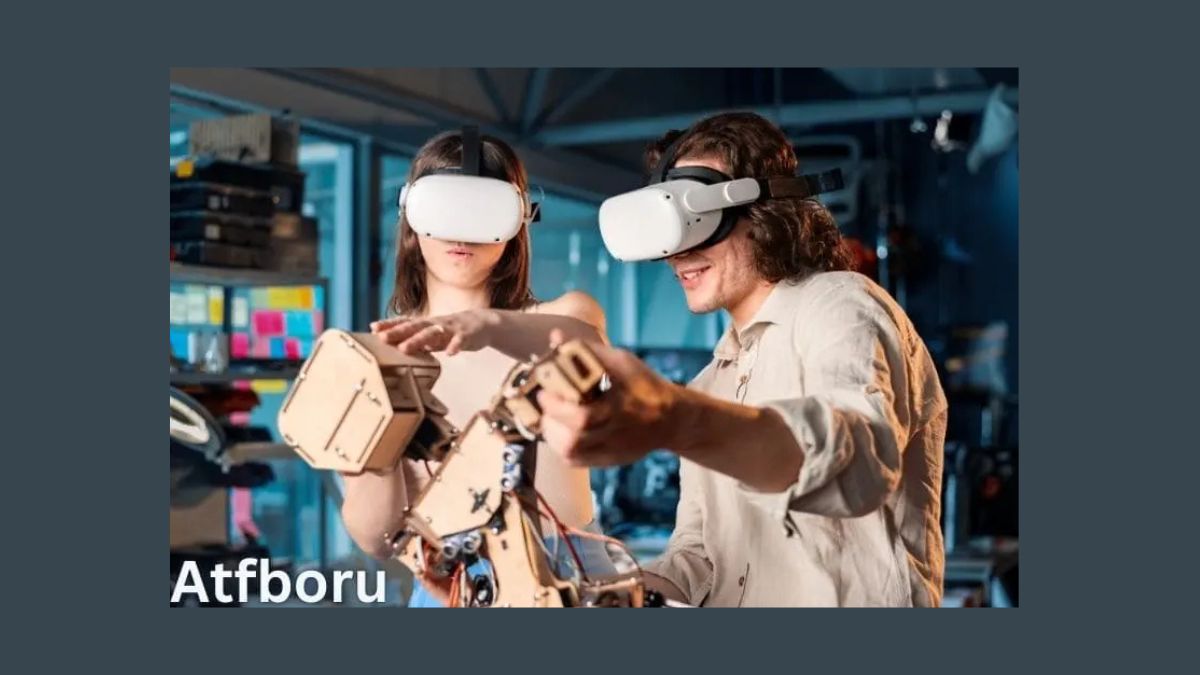TECHNOLOGY
How Deep Offshore Technology Drives Sustainable Oil and Gas Production

Sustainability and energy production may seem an unlikely pair, especially when it comes to oil and gas. Yet, with the advent of deep offshore technology, the industry is turning over a new leaf. Not only does this cutting-edge tech allow for more efficient resource extraction, but it also prioritizes environmental responsibility, paving the way for sustainable practices.
This article dives into how deep offshore technology is revolutionizing oil and gas production, reducing its environmental impact, and supporting global energy demands without sacrificing our planet’s future.
What Is Deep Offshore Technology?
Deep offshore technology refers to sophisticated systems and methods used to explore, extract, and manage oil and natural gas reserves located under the seabed in deep waters (depths of over 1,000 feet). Unlike traditional drilling, deepwater operations require highly advanced technology to overcome extreme conditions such as high pressure, low temperatures, and immense depths.
Some key advancements include autonomous underwater vehicles (AUV), remote-operated vehicles (ROV), and next-generation drilling rigs, which make deepwater exploration more efficient and safer.
But why invest in these complex systems? For one, approximately 30% of the world’s recoverable oil reserves lie beneath deep waters, according to World Oil. This technology unlocks access to resources that were previously unattainable, securing energy for future generations.
Why Sustainability Matters in Oil and Gas
The impact of oil and gas extraction on the environment has been a cause for concern for decades. These operations often lead to greenhouse gas emissions, habitat destruction, and risks of spills that harm marine ecosystems. With growing awareness of climate change and environmental degradation, there is mounting pressure on the industry to adopt sustainable practices.
Governments, stakeholders, and consumers are no longer passive observers. International agreements like the Paris Accord have set ambitious carbon reduction goals. For oil and gas producers, this means incorporating innovation and sustainable practices into their operations—or face obsolescence.
This is where deep offshore technology plays an instrumental role. By leveraging cleaner, more efficient systems, companies can meet energy demands while minimizing their carbon footprint.
The Role of Deep Offshore Technology in Sustainability
1. Enhanced Resource Efficiency
Deepwater operations often use dual-gradient drilling (DGD) technology, which significantly saves energy. DGD manages to control and distribute well pressure better than traditional methods, reducing energy wastage during drilling.
Additionally, advanced reservoir management systems optimize extraction, ensuring that no resources are wasted. These tools improve data collection, allowing decision-makers to pinpoint exactly where and how to drill.
Key takeaway: Efficient use of resources means less irreparable strain on the planet.
2. Minimizing Environmental Impact
Traditional exploration can be disruptive to underwater ecosystems. However, remote-operated vehicles (ROVs) now allow for precise and minimally invasive drilling operations. ROVs are operated from surface vessels and are equipped with high-definition cameras and dexterous robotic arms to carry out essential work underwater without damaging sensitive habitats.
Furthermore, subsea production systems, which relocate key operations from platforms to the ocean floor, reduce surface disruptions. Fewer platforms mean less visual and noise pollution, and lower risks of accidental spills.
Real-world example: BP’s Thunder Horse project in the Gulf of Mexico uses subsea production systems to reduce its ecological footprint while maximizing productivity.
3. Reducing Carbon Output
Deep offshore technology is harnessing renewable energy to power extraction activities. For instance, wind and solar energy are increasingly utilized to run offshore rigs and platforms. Electric-powered systems are replacing diesel engines, reducing emissions considerably.
Automated systems also play a pivotal role in lowering carbon output. AUVs and ROVs operate autonomously or semi-autonomously, consuming less fuel than manned equipment. By optimizing their operations, companies are reducing overall energy consumption.
4. Improved Spill Management
Oil spills are arguably the most devastating consequence of drilling activities, but deep offshore technology is mitigating these risks. Equipment like blowout preventers (BOPs) ensures rapid containment of potential leaks.
Additionally, machine learning algorithms enable predictive maintenance for drilling equipment. These systems can detect anomalies before they escalate, preventing unnecessary shutdowns or failures that could lead to spills.
Did you know? After the Deepwater Horizon disaster in 2010, there was an increased focus on safety and spill prevention in deepwater operations. Today’s technologies continue to improve response times and minimize damages.
Challenges in Implementing Deep Offshore Technology
While promising, deploying deep offshore technology isn’t without its challenges. High costs, technical complexity, and workforce training remain significant barriers for companies exploring sustainable practices.
Deepwater projects are expensive, with upfront investments often reaching billions of dollars. There is also a need for skilled personnel to manage and operate such technologies effectively. Bridging this knowledge gap will require significant investment in training and education.
Regulatory hurdles further complicate matters. Countries and regions often develop conflicting policies about offshore drilling, making it difficult for stakeholders to align their operations with both local and global expectations.
However, as more companies adopt deep offshore technologies, economies of scale may help reduce costs and encourage widespread implementation.
The Future of Deep Offshore Technology
The future looks optimistic for sustainable oil and gas production. Emerging innovations like carbon capture and storage (CCS) are showing promise for reducing environmental impact further. CCS involves trapping carbon emissions from offshore platforms and storing them securely underwater, preventing them from reaching the atmosphere.
Collaborations between technology providers and oil companies are accelerating these innovations. For example, Equinor, Shell, and Total have invested in CCS through their Northern Lights Project, a venture aimed at storing CO2 along the North Sea seabed.
Meanwhile, artificial intelligence and machine learning will continue to play critical roles in analyzing data more effectively, improving decision-making, and further automating operational processes.
What does this mean for the oil and gas industry? Companies that invest in automation, renewable energy integration, and low-impact technologies now stand to gain a competitive edge in the long run.
Driving Toward Sustainability
Deep offshore technology is reshaping the oil and gas industry by proving that environmental sustainability and energy production can coexist. With innovations that prioritize efficiency, reduce carbon emissions, and protect marine ecosystems, the sector is moving toward a cleaner and more responsible future.
But there’s still work to be done. Collaboration across governments, corporations, and technology providers will be crucial for scaling these advancements and achieving lasting impact.
Whether you’re a stakeholder, policymaker, or technology enthusiast, supporting sustainable practices in deep offshore technology today helps secure a better energy future for all.

TECHNOLOGY
Atfboru: A Creative Platform for Designers, Artists, and Entrepreneurs

Unleashing Creativity with Purpose
Designers, artists, and entrepreneurs often find themselves at the intersection of creativity and business, where ideas converge and innovation thrives. Atfboru is a platform built to cater to this unique intersection—empowering professionals across industries to connect, create, and grow. Whether you’re a graphic designer showcasing your portfolio, an artist searching for collaborators, or an entrepreneur looking for tailored design solutions, Atfboru offers a space where inspiration meets opportunity. But what exactly makes this platform a go-to resource? This blog will explore the features, benefits, and opportunities Atfboru provides, and why it’s the perfect tool for anyone in creative industries.
What is Atfboru?
Atfboru (pronounced “at-for-you”) is a specialized platform designed to bring designers, artists, and entrepreneurs together. Unlike generic websites or job boards, Atfboru creates a supportive ecosystem where users can network, showcase their work, and build meaningful partnerships.
From hiring talented designers to finding rare art supplies, it’s a one-stop destination tailored to the creative community. With its diverse tools and features, Atfboru empowers users to make their mark in industries that thrive on originality and skill.
Features That Set Atfboru Apart
Atfboru is not just another platform—it’s a purpose-driven solution that makes life easier for creative professionals. Here’s what makes it unique:
A Hub for Portfolio Showcasing
For artists and designers, visibility is key to attracting clients or collaborators. Atfboru offers an optimized space to curate and display your portfolio online.
Responsive designs ensure your showcase looks immaculate on any device.
Portfolio analytics allow users to see who’s viewing their work and how they engage with it.
Customizable templates help reflect your unique brand and style.
Streamlined Client Collaboration
One of Atfboru’s standout features is its collaboration suite for freelancers and agencies. Here’s what you can expect:
Project management tools to organize deadlines, assets, and tasks.
Instant messaging for seamless client communication.
Document sharing and feedback integration so that ideas can flow without friction.
Marketplace for Creative Resources
Have you struggled to buy or sell niche design tools? This platform hosts a dedicated marketplace where users can find everything from exclusive art supplies to digital design templates.
Entrepreneurs can source logos, custom illustrations, or branding kits.
Artists and designers can sell stock images, limited-edition prints, or small-batch handmade goods.
Global Networking Opportunities
Community building is one of Atfboru’s core values. The platform connects you with peers, mentors, and collaborators worldwide.
Participate in global forums and discussions.
Join local meetups or virtual brainstorming sessions.
Access mentorship programs with top names in creative fields.
Educational and Business Tools
Success requires both talent and strategic know-how. Atfboru equips users with tools for strategic growth:
Workshops and webinars cover techniques, trends, and skill-building.
Business templates for contracts, invoices, and proposals simplify the professional side of creativity.
AI-powered recommendations suggest potential clients, collaborators, or projects aligned with your skills.
Why Entrepreneurs, Designers, and Artists Love Atfboru
Atfboru thrives because it’s built for creative individuals by those who understand the challenges of their professions. Here’s why the platform has gained such traction across creative industries.
For Entrepreneurs
Running a startup is demanding, and curating a memorable brand design takes significant effort. With Atfboru, entrepreneurs can easily hire vetted professionals, explore ready-made tools, and stay on track with strategic branding.
Example: Sarah, a bakery owner, collaborated with a graphic designer on Atfboru to create a logo that encapsulated her brand’s vision, leading to increased foot traffic and social media engagement.
For Designers
Beyond portfolio hosting, Atfboru is a dream come true for designers juggling freelance gigs, collaborations, and personal projects.
Example: A seasoned UX designer, Leo, found a mobile app project on Atfboru. Using the integrated project management tools, he delivered incredible results, earning a five-star rating and ongoing work with the client.
For Artists
The challenge for many artists lies in reaching the right buyers for their unique pieces. Through Atfboru’s marketplace and community, artists can showcase their talent and connect with an audience that values their craft.
Example: Maya, an illustrator, used Atfboru to sell limited-edition prints of her artwork, gaining both income and recognition.
How to Get Started on Atfboru
Joining Atfboru is as easy as 1-2-3:
Create Your Account: Sign up and fill out your profile to showcase your skills and specialties.
Explore Features: Set up your portfolio, upload content to the marketplace, or browse potential collaborators.
Engage with the Community: Join discussions, attend events, and post your work to attract the right opportunities.
Atfboru offers both free and premium plans, allowing you to scale your use of the platform based on your needs. With premium access, users unlock advanced insights, extended storage, and priority visibility.
Building the Future with Atfboru
Whether you’re designing, painting, or crafting a powerful brand, Atfboru offers the tools, network, and inspiration to take your creativity further. Partner with other like-minded individuals, and turn ideas into impactful projects that matter.
Creativity thrives in the right environment, and with Atfboru, you don’t just survive—you succeed. What are you waiting for? Your next big idea needs a platform.
TECHNOLOGY
7 Precision Solutions for Fleet and Equipment Repairs That Maximize Uptime

Meta Description: Discover proven precision repair solutions that keep your fleet running efficiently. Expert strategies to minimize downtime and reduce maintenance costs.
Fleet downtime costs businesses an average of $760 per vehicle per day, making precision repair solutions critical for operational success. Whether you manage a construction fleet, agricultural equipment, or commercial vehicles, implementing the right repair strategies can have a significant impact on your bottom line. This comprehensive guide explores seven precision solutions that will help you maintain peak equipment performance while minimizing costly interruptions to your operations.
1. Predictive Maintenance Through Advanced Diagnostics
Modern fleet management relies heavily on predictive maintenance technologies that identify potential issues before they become costly breakdowns. Advanced diagnostic systems use real-time data monitoring to track engine performance, hydraulic pressure, and component wear patterns. These systems can detect anomalies in engine temperature fluctuations, oil pressure variations, and unusual vibration patterns that often precede major failures.
Fleet managers who implement predictive maintenance programs report up to 25% reduction in maintenance costs and 70% fewer unexpected breakdowns. The key lies in establishing baseline performance metrics for each piece of equipment and setting automated alerts when parameters deviate from normal ranges. This proactive approach allows maintenance teams to schedule repairs during planned downtime rather than dealing with emergencies that can halt entire operations.
2. Specialized Component Rebuilding Services
Rather than replacing entire systems, precision rebuilding of critical components offers significant cost savings while maintaining reliability standards. Professional rebuilding services focus on restoring diesel engine components such as fuel injection systems, turbochargers, and cylinder heads to original manufacturer specifications. This approach extends equipment life while providing performance that matches or exceeds new part standards.
The rebuilding process involves comprehensive disassembly, precision machining, and reassembly using updated seals and wear components. Quality rebuilding services provide detailed documentation of work performed and often include warranties that rival new part guarantees. This solution proves particularly valuable for older equipment where new parts may be expensive or difficult to source.
3. Mobile Repair Units for On-Site Service
Deploying mobile repair capabilities directly to equipment locations eliminates the time and expense associated with transporting disabled machinery to service facilities. Mobile units equipped with diagnostic computers, precision tools, and common replacement parts can resolve approximately 80% of field breakdowns on-site. These units prove especially valuable for construction sites, agricultural operations, and remote industrial locations where equipment transportation presents logistical challenges.
Successful mobile repair programs maintain detailed inventory management systems that track parts usage patterns and ensure technicians carry appropriate components for their assigned equipment types. GPS tracking and dispatch software optimize response times, while digital work order systems provide real-time updates to fleet managers and equipment operators.
4. Precision Hydraulic System Maintenance
Hydraulic systems power critical functions in most heavy equipment, making their proper maintenance essential for reliable operation. Precision hydraulic maintenance involves regular fluid analysis, filter replacement schedules, and system pressure testing to identify developing problems. Contaminated hydraulic fluid accounts for approximately 75% of hydraulic system failures, making fluid cleanliness monitoring a crucial preventive measure.
Professional hydraulic maintenance includes comprehensive system flushing, seal replacement, and component calibration using manufacturer-specified procedures. Regular maintenance schedules should account for operating conditions, with more frequent service intervals for equipment operating in dusty or high-temperature environments. Proper hydraulic maintenance can extend component life by 300% compared to reactive repair approaches.
5. Computerized Parts Inventory Management
Effective parts management balances inventory investment with equipment availability requirements. Computerized inventory systems track parts usage patterns, lead times, and equipment criticality to optimize stock levels. These systems can automatically generate purchase orders when inventory reaches predetermined reorder points, ensuring critical components remain available without excessive capital investment.
Advanced inventory management incorporates equipment age, manufacturer recommendations, and historical failure data to predict future parts requirements. Integration with equipment monitoring systems provides automated alerts when specific components approach recommended replacement intervals, allowing maintenance teams to schedule work efficiently while parts are readily available.
6. Certified Technician Training Programs
Equipment complexity continues to increase, making ongoing technician education essential for precision repairs. Certified training programs ensure repair personnel understand proper diagnostic procedures, safety requirements, and manufacturer specifications. Technicians with current certifications complete repairs 40% faster with significantly lower callback rates compared to uncertified personnel.
Training programs should cover electronic diagnostic systems, hydraulic troubleshooting, and safety protocols specific to equipment types in your fleet. Regular skills assessments and continuing education requirements maintain technician competency levels while introducing new repair techniques and technologies. Investment in technician training typically generates returns of $3-5 for every dollar spent through improved efficiency and reduced rework.
7. Quality Control and Documentation Systems
Systematic quality control processes ensure repairs meet specified standards while providing accountability for work performed. Documentation systems track repair history, parts installed, and performance outcomes to identify recurring issues and optimize maintenance strategies. Digital work orders with photo documentation provide detailed records that support warranty claims and regulatory compliance requirements.
Quality control checkpoints should include pre-repair inspections, work verification procedures, and post-repair testing protocols. Regular audits of completed work help identify training needs and process improvements. Comprehensive documentation also supports equipment valuation for insurance and resale purposes while demonstrating maintenance compliance for regulatory inspections.
Implementing these precision repair solutions requires careful planning and investment in systems, training, and equipment. However, the resulting improvements in equipment reliability, reduced downtime, and lower total cost of ownership make these investments essential for maintaining a competitive fleet operation. Start by evaluating your current maintenance practices and identifying areas where precision solutions can deliver the greatest impact on your operational efficiency and profitability.
TECHNOLOGY
Gomyfinance Invest: Simplify Your Path to Financial Growth

Are you looking for a smarter, simpler way to manage your investments and achieve your financial goals? Welcome to Gomyfinance Invest—a cutting-edge platform designed to empower your financial growth. Whether you’re a seasoned investor or just getting started, Gomyfinance Invest offers intuitive tools, expert insights, and a streamlined approach to investing.
This blog will walk you through how Gomyfinance Invest simplifies personal finance management, the unique tools it provides, and how it can help you unlock your financial potential.
What is Gomyfinance Invest?
Gomyfinance Invest is an innovative financial platform built to make investing accessible, intuitive, and rewarding. Its mission is simple yet impactful—it aims to help everyday individuals grow their wealth confidently without the intimidating jargon or steep learning curves of traditional investment platforms.
The platform leverages powerful technology and expert guidance to provide unique features like goal-based investing, portfolio recommendations, and real-time performance tracking. Whether your goal is saving for a dream vacation, buying a home, or planning for retirement, Gomyfinance Invest helps you stay on track and informed every step of the way.
Why Gomyfinance Invest Stands Out From the Crowd
The financial world can feel overwhelming when considering where to invest your hard-earned money. With so many apps, platforms, and advisors vying for attention, how do you know which one is right for you? Here’s why Gomyfinance Invest sets itself apart:
1. Simple, User-Friendly Design
Navigating your financial tools shouldn’t feel like solving a Rubik’s Cube. Gomyfinance Invest boasts an intuitive and clean interface designed for ease of use across all experience levels. From setting up your account to monitoring your portfolio, every feature is built to make your investing experience seamless—even if it’s your first time.
2. Tailored Investment Strategies
No two financial journeys are alike. Gomyfinance Invest offers personalized recommendations based on your goals, risk tolerance, and investment timeline. These tailored strategies ensure that you’re not using a one-size-fits-all approach but one specifically designed to meet your unique needs.
3. Goal-Based Investing
Unlike traditional platforms that center solely around products, Gomyfinance Invest focuses on you—your aspirations and financial milestones. You can set clear goals, such as saving for your child’s education or building an emergency fund, and the platform will create a roadmap to guide your investment choices.
4. Comprehensive Insights
Understanding where your money is going and how it’s growing is key to smart investing. Gomyfinance Invest provides detailed yet easy-to-read reports and analysis, helping you keep track of your progress. You’ll get insights into your portfolio’s performance, market trends, and areas for optimization.
5. Low Fees with High Returns
Investing shouldn’t mean losing money to hidden charges or exorbitant fees. With Gomyfinance Invest, you benefit from a transparent pricing structure that ensures more of your money stays invested—and working hard for your financial future.
Key Features That Simplify Financial Growth
Now that you understand what makes Gomyfinance Invest unique, let’s explore the tools that help redefine the investing experience.
Smart Portfolios
Gomyfinance Invest’s Smart Portfolio technology automates your investments based on your selected goals and preferences. Once your preferences are set, the portfolio is adjusted automatically to maintain balance and optimize your returns. It’s investing on autopilot—but smarter.
Educational Resources
Empower yourself with terminology-free, accessible financial education material. Gomyfinance Invest believes every user should feel confident in making decisions, which is why they offer interactive tutorials, market updates, and expert insights to supplement your learning.
Responsive Mobile App
Stay on top of your finances wherever you are. The Gomyfinance Invest mobile app allows you to monitor your accounts, make adjustments to your investments, and receive real-time financial updates—all with a couple of taps. Managing your finances has never been this convenient.
Bank-Level Encryption
Your security matters. Gomyfinance Invest uses bank-grade encryption to protect your data and transactions, offering peace of mind while you focus on growing your finances.
Community of Investors
Join a thriving network of like-minded individuals who share tips, insights, and encouragement. Gomyfinance Invest fosters a sense of community, allowing you to connect and learn from others who are also navigating their financial goals.
Who Can Benefit from Gomyfinance Invest?
Gomyfinance Invest is perfect for anyone looking to simplify investing while potentially achieving better results. Whether you’re a complete newbie to finance, working professional, or a seasoned investor, the platform adjusts to meet your needs.
- First-Time Investors: Eliminate the intimidation factor with step-by-step guidance and simple interfaces.
- Busy Professionals: Stay hands-off while tailored automation tools manage your portfolio.
- Seasoned Investors: Enjoy advanced insights and the ability to fine-tune your financial strategy.
How to Get Started with Gomyfinance Invest
Starting your financial journey with Gomyfinance Invest is easy. Here’s how to get up and running in no time:
- Sign Up
Visit the Gomyfinance Invest website or download the app to create your account. It only takes a few minutes to begin your investing adventure.
- Set Your Goals
Define what you want to achieve financially, from long-term growth to short-term savings.
- Personalize Your Preferences
Choose your risk tolerance and investment preferences with their simple questionnaire.
- Fund Your Account
Link your bank account securely or transfer funds directly.
- Start Investing
Sit back and watch as your money starts working for you with optimized and automated strategies.
- Track and Adjust
Monitor your progress, adjust your goals, and make modifications as needed.
Investing in Your Future Made Easy
Financial growth doesn’t have to be overly complicated. Gomyfinance Invest simplifies the process so you can focus less on the “how” and more on the “why.” From goal-setting to smart portfolio management, every feature is designed with you in mind.
Take control of your financial future today by trying out Gomyfinance Invest. Whether you’re saving for a rainy day or aiming for ambitious life goals, this platform empowers you to make it happen with confidence.
Simplify Your Investments Today!
Are you ready to take the first step toward financial growth? Start your investment journey with Gomyfinance Invest—for free. Explore their tools, set your goals, and watch your investment ambitions turn into reality. [Sign Up Now!]
Conclusion
In conclusion, achieving your financial goals and growing your wealth doesn’t have to be daunting or complex. With Gomyfinance Invest, you can simplify the investment process and focus on the reasons behind your financial aspirations. From goal-setting to smart portfolio management, Gomyfinance Invest is designed to empower you every step of the way. Start your investment journey today and take control of your financial future. Sign up for free with Gomyfinance Invest and unlock a world of possibilities for effortless financial growth.
-

 NEWS2 weeks ago
NEWS2 weeks agoWhat is www.avstarnews.com and What Does It Offer?
-

 TECHNOLOGY5 months ago
TECHNOLOGY5 months agoGomyfinance Invest: Simplify Your Path to Financial Growth
-

 TECHNOLOGY2 weeks ago
TECHNOLOGY2 weeks agoAtfboru: A Creative Platform for Designers, Artists, and Entrepreneurs
-

 BUSINESS2 weeks ago
BUSINESS2 weeks ago.Ydesi: Exploring Its Significance and Applications
-

 CRYPTO4 months ago
CRYPTO4 months agoCrypto30x.com Gemini: Revolutionize Your Crypto Trading Experience
-

 NEWS12 months ago
NEWS12 months agoDogo News: The Latest Trends in the World of Dogo Argentino
-

 EDUCATION11 months ago
EDUCATION11 months agothe christian between the gospel and society
-

 HEALTH1 year ago
HEALTH1 year agoEmmyhii777: Unlocking the Power of Positive Social Connections